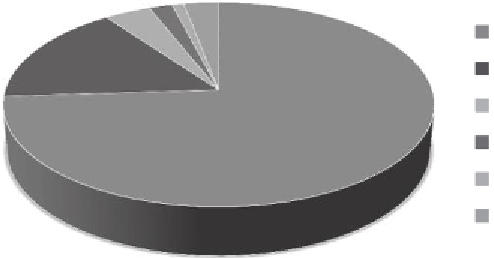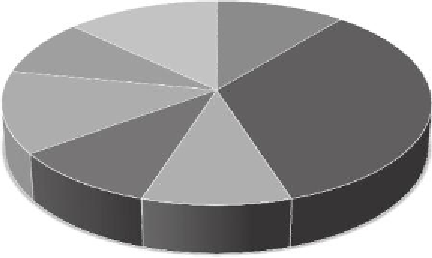what-when-how
In Depth Tutorials and Information
2%
1%
3%
4%
Human factors
16%
Vessel-technical
Environmental
Port facilities
74%
Aids to navigation
Other vessel
Figure9.1
Incidenceofthetypologiesofaccidentcauses.(FromTransportation
SafetyBoardofCanada,(TSB),1998,http://www.bst.gc.ca.)
Misjudgment-master
11%
13%
Misjudgment-pilot
9%
Lack-comm.
34%
13%
Inattention of watch
o�cer
Inattention-pilot
10%
10%
Misunderstanding
Other human factors
Figure9.2
Typologyofhumanfactorsassociatedwithcausinganaccident.(From
TransportationSafetyBoardofCanada,(TSB),1998,http://www.bst.gc.ca.)
of economic pressure in a strongly competitive environment” [5]. he incident was
not a result of human error, possibly associated with technical failures, based on
the oicial report. hus, the scope of the safety analysis of the Maritime Transport
System must be broadened to include all relevant, outside factors and actors whose
decisions contribute to the safety of the system.
he most critical issue in developing an effective risk or accident analysis is
identifying the various parties involved and determining to what degree they affect
the sequence of events leading up to the occurrence of an accident. In the case of
the Maritime Transport System, the various parties may include but are not limited
to ship operators, shipyards, government bodies, or company investors. hese actors
may directly or indirectly serve a role in the sequence of events contributing to the






